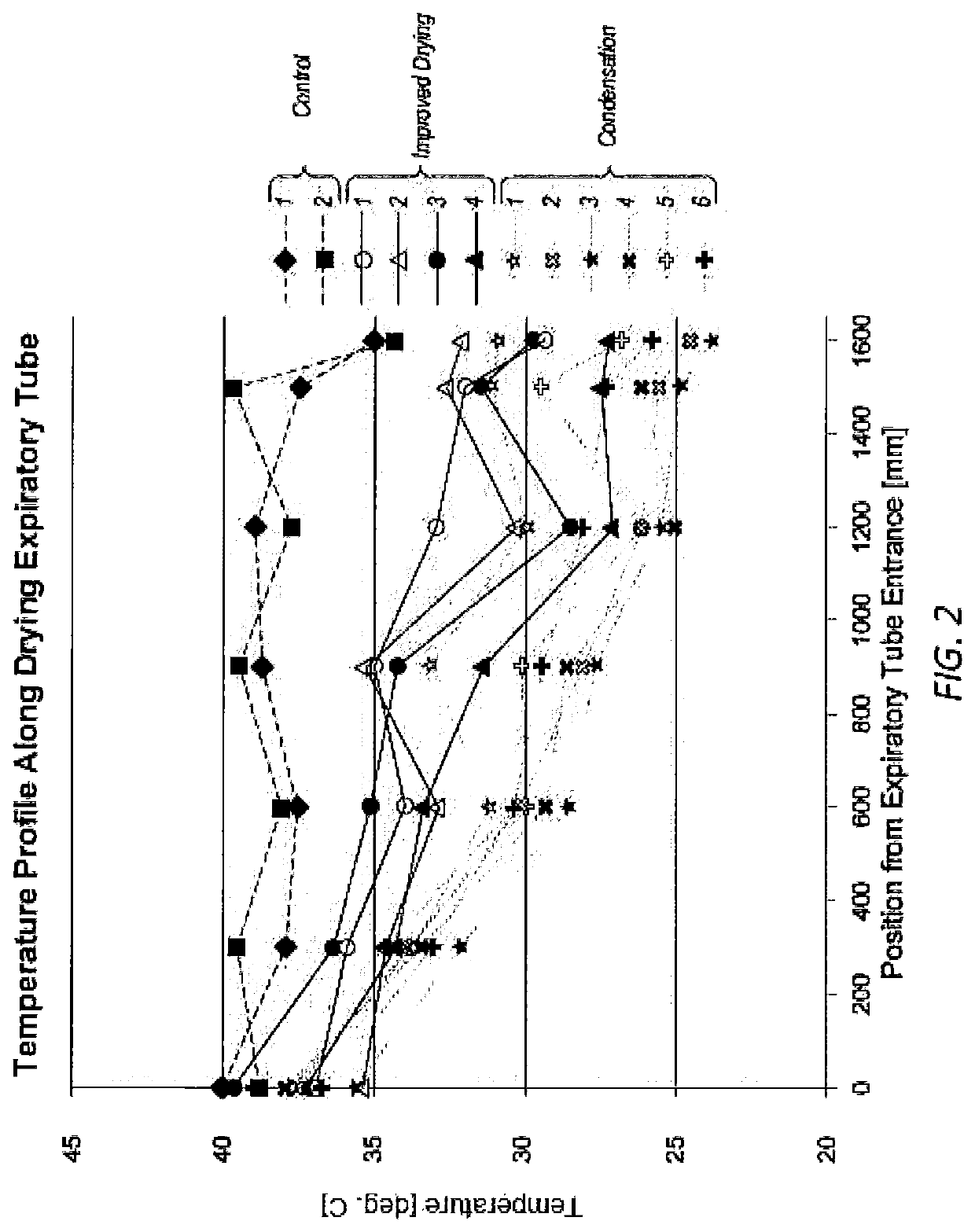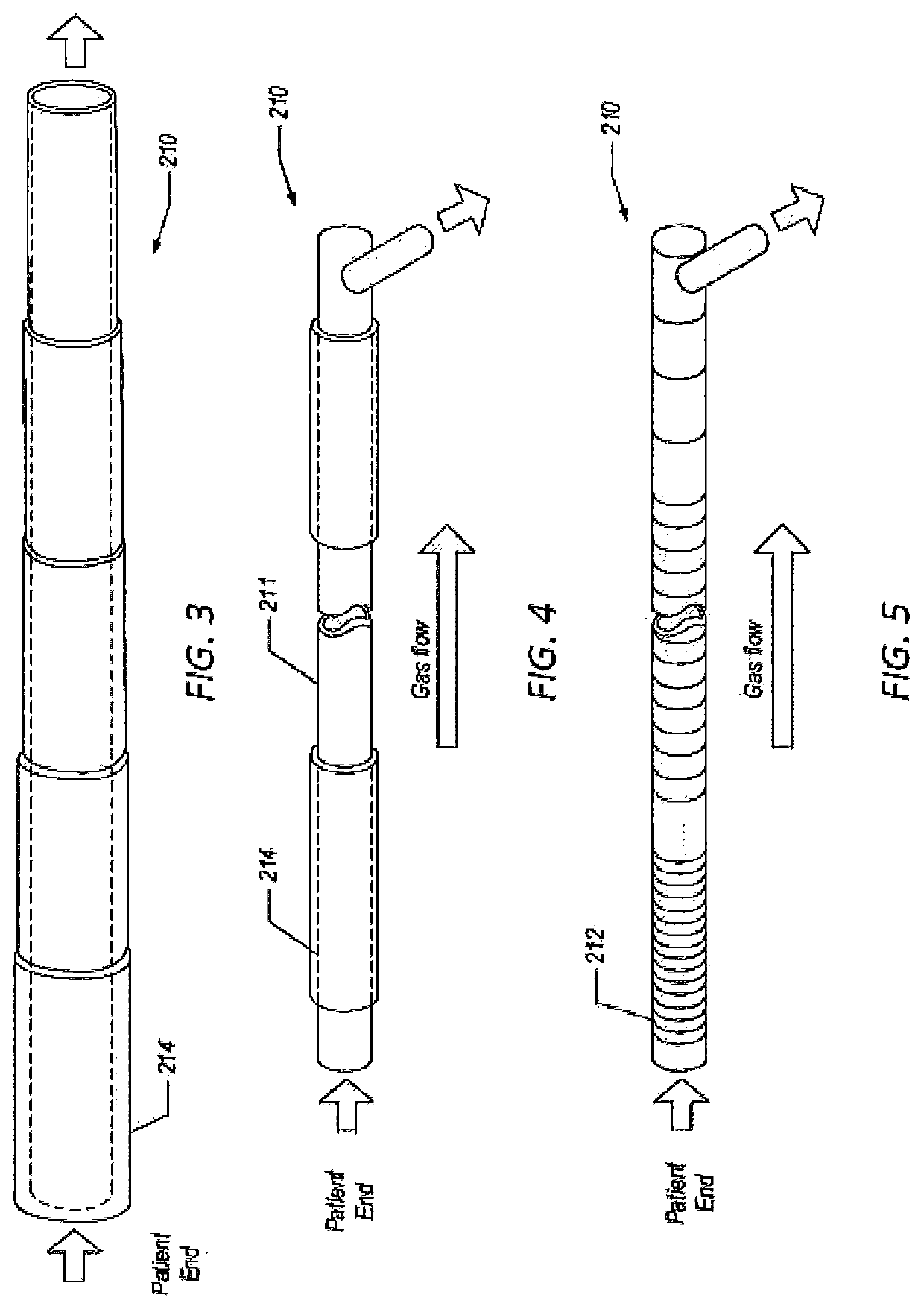Drying expiratory limb with tailored temperature profile and multi-lumen configuration
a technology of expiratory limbs and temperature profiles, applied in the field of respirator circuits, can solve the problems of increased gas loss, increased gas loss, and increased gas loss, and achieve the effect of increasing the gas drying
- Summary
- Abstract
- Description
- Claims
- Application Information
AI Technical Summary
Benefits of technology
Problems solved by technology
Method used
Image
Examples
Embodiment Construction
[0056]Certain embodiments and examples of expiratory limbs are described herein. Those of skill in the art will appreciate that the disclosure extends beyond the specifically disclosed embodiments and / or uses and obvious modifications and equivalents thereof. Thus, it is intended that the scope of the disclosure not be limited by any particular embodiments described herein.
[0057]Descriptions of expiratory limbs are presented herein that include breathable material configured to pass water vapor and to substantially prevent liquid water from passing through. Any suitable breathable material can be used. As an example, sample breathable materials are described in Applicant's PCT Publication WO 2011 / 077250, entitled “Components for Medical Circuits,” filed Dec. 22, 2010, which is hereby incorporated by reference in its entirety and made a part of this specification. For example, the breathable material can be a breathable foamed material configured to allow the transmission of water va...
PUM
 Login to View More
Login to View More Abstract
Description
Claims
Application Information
 Login to View More
Login to View More - R&D
- Intellectual Property
- Life Sciences
- Materials
- Tech Scout
- Unparalleled Data Quality
- Higher Quality Content
- 60% Fewer Hallucinations
Browse by: Latest US Patents, China's latest patents, Technical Efficacy Thesaurus, Application Domain, Technology Topic, Popular Technical Reports.
© 2025 PatSnap. All rights reserved.Legal|Privacy policy|Modern Slavery Act Transparency Statement|Sitemap|About US| Contact US: help@patsnap.com



